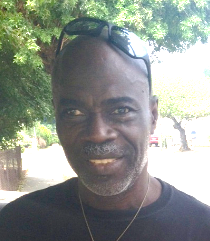NPR Posting Story On Rural Courthouse Closing
Courts Begin New System For Rationing Budget
Prisons Offer Lessons For Courts Rationing
Drop In Civil Cases Tracks With Budget Cuts
After Layoffs, L.A. Courts Hiring Again – Judges That Is
Courthouse cutbacks create hardships for man with disabilities
By Sara Warner

Mr. Femi Collins, a disabled engineer who has become one of the L.A. County citizens impacted directly by closing of local courthouses. (Photo by Sara Warner)
When you are blind, the difference between 4 miles and 27 miles in Los Angeles can be dramatic. Here is Mr. Collins’ story.
After graduating with a BS and MS from Cal Poly Pomona University, Mr. Collins pursued a career in Engineering. With an advancing career as an engineer and a growing, supportive family, Mr. Collins personified the “American Dream” – until a disability changed his life.
Bay Area TV Report Hits Hard On Court Delays, Funding
The NBC affiliated TV station in San Francisco has broadcast a strong story about court delays due to ongoing budget cuts, including a court critic who notes that the judicial administrators are partly to blame for poor spending decsions. The “Bay Area Investigative Unit” found delays in every one of California’s 58 Superior Court systems and documented backlogs that included 30,000 documents stacked on one court’s floor awaiting proper filing.
Among the hard-hit are family courts, and the Investigative Unit reported the story of a Contra Costa County family court custody dispute for more than three years, leaving five and seven year old kids in legal limbo.
“I see my children,” the mother involved in the custody battle told the station. “They cry for me.”
Watch the report here. (Editor’s note: the print version on the website is a bit different from the video, which includes more details.)